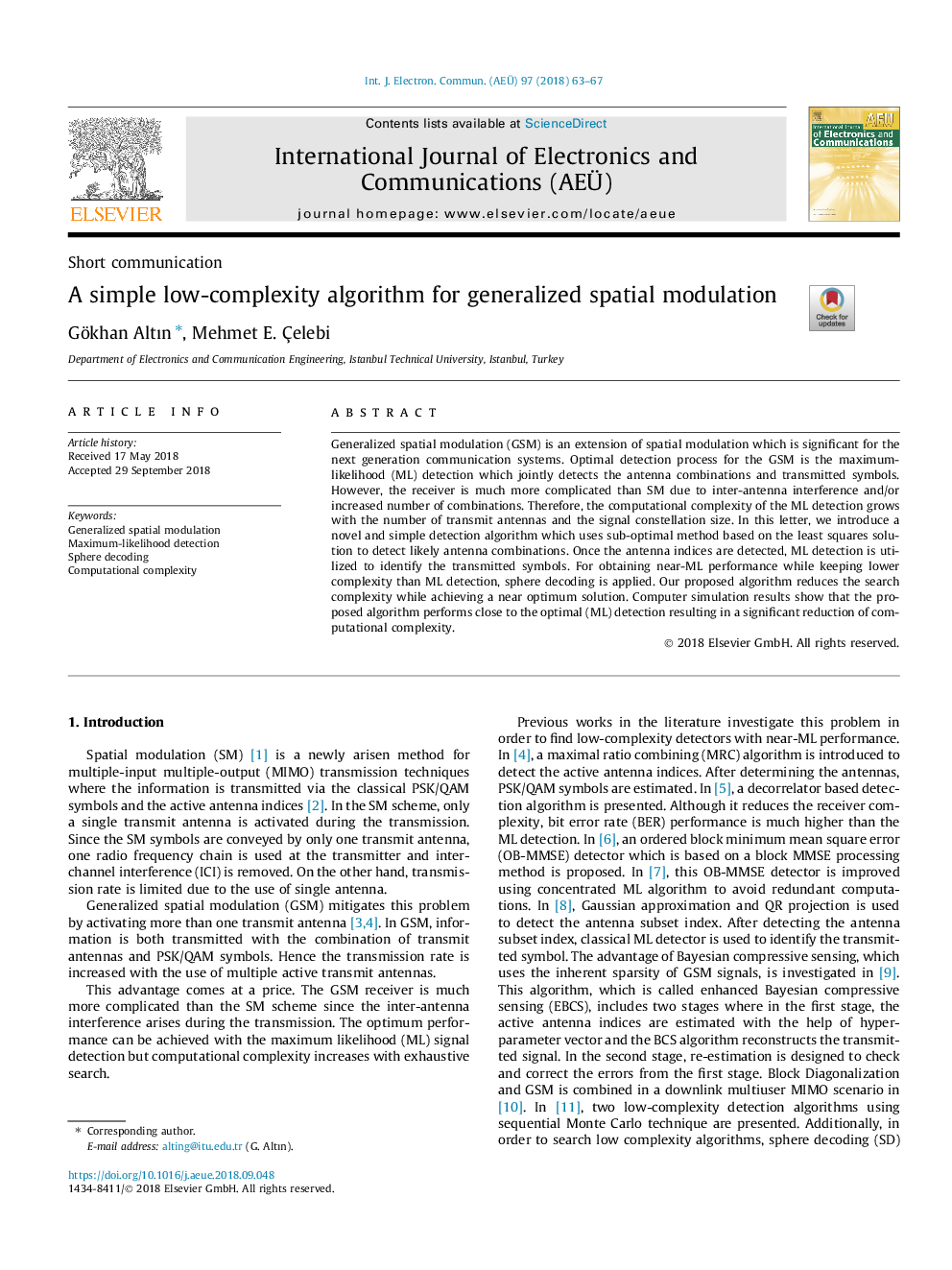| Article ID | Journal | Published Year | Pages | File Type |
|---|---|---|---|---|
| 11009923 | AEU - International Journal of Electronics and Communications | 2018 | 5 Pages |
Abstract
Generalized spatial modulation (GSM) is an extension of spatial modulation which is significant for the next generation communication systems. Optimal detection process for the GSM is the maximum-likelihood (ML) detection which jointly detects the antenna combinations and transmitted symbols. However, the receiver is much more complicated than SM due to inter-antenna interference and/or increased number of combinations. Therefore, the computational complexity of the ML detection grows with the number of transmit antennas and the signal constellation size. In this letter, we introduce a novel and simple detection algorithm which uses sub-optimal method based on the least squares solution to detect likely antenna combinations. Once the antenna indices are detected, ML detection is utilized to identify the transmitted symbols. For obtaining near-ML performance while keeping lower complexity than ML detection, sphere decoding is applied. Our proposed algorithm reduces the search complexity while achieving a near optimum solution. Computer simulation results show that the proposed algorithm performs close to the optimal (ML) detection resulting in a significant reduction of computational complexity.
Related Topics
Physical Sciences and Engineering
Computer Science
Computer Networks and Communications
Authors
Gökhan Altın, Mehmet E. Ãelebi,
